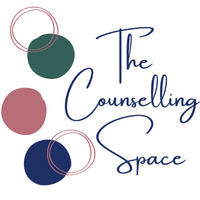Helping Your Child's Fear of Needles

This week children 5 years+ are now eligible for Covid vaccines in Australia. I’ve already been contacted by several parents, worried how their children with fear of needles or needle phobia will cope. Armed with reassurance, practical strategies and accurate knowledge, parents can help their children through their fears so they don’t go on to be the one in ten adults that have a lifetime fear of needles.
Fear of needles is very common for children:
- it is a new/uncommon experience for them to try and understand
- it often involves seeing people they don’t know
- it involves a visit to a place that smells strange and is very brightly lit
- they often pick up on parental anxiety and worry
- they may have memories of previously painful injections
- and…… it actually does hurt a bit!
For children who have had multiple visits to doctors for other health reasons, or who have seen other family members ill or in hospital, there may also be a range of associations with needles that trigger fear.
Distinguishing fear from phobia is an important first step - as from a therapeutic perspective each requires a different approach. You know your own child well - and can tell the signs they are worried or fearful of something. Maybe there are tears, procrastination, repeatedly saying ‘no’, increased irritability or other behaviour changes. After all, children generally tell us how they are feeling through their behaviour before their words!
Here are 10 practical strategies you can use to help your child with a fear of needles:
- Start with Yourself. You are the person your child looks to for reassurance and safety. If they see you worried and anxious, they will pick up on this. Use reassurance and monitor your own breathing and heart rate. Children pick up incongruence quickly - if your words say “Everything will be fine” but your body language, your heart rate and your breathing are giving out panic signals - it is the body signals your child’s brain will pick up on.
- Information is Power. Fear of the unknown is one of the biggest triggers to our brain’s perception something is unsafe. Let your child know in advance that they will be getting an injection. Same day is appropriate for young children, while older children can know a few days or up to a week prior.
- Give accurate information. A needle does hurt - and children learn to mistrust if they are told “This won’t hurt a bit”, when of course it does! Let them know that it will hurt a little, but that it will be over quickly.
- Be confident and friendly. When you arrive at the GP surgery maintain your own sense of calm, greet the staff warmly and remain friendly even if they are busy and distracted. This lets your child know they are in a place where you like and trust the people.
- Take toys and distractions with you. Favourite toys and books, music or iPad games (on silent or with headphones!) appropriate to the age of your child will help fill time in the waiting room, as well as prove helpful during the session.
- Use Your Breath and Their Breath. Slow, deep breathing sends a signal to the brain that “there is no danger here”. It is the fastest way to regulate a distressed system (this is why as therapists we are always going on about breathing!). Teach your child how to do this in a range of settings so they can use it whenever they need to. Helping them take slow deep breaths by modelling it when you go into the room where the injection will happen can be helpful for both of you. For younger children consider taking in a bubble blower and have the child blow bubbles - this works as both a distraction and a way of focusing on deep breaths.
- Touch can help. Tactile sensation - touch - is valuable for soothing, distraction and pain relief. Our brain is soothed by repetition, so rhythmic stroking on a child’s hand or arm sends safety signals to the brain. It also reminds them you are right there to support them. And of course, you are still staying calm yourself, and modelling slow deep breaths.
- Consider purchasing a Buzzy. A buzzy uses an ice pack plus vibration to confuse the body’s nerves and distract attention away from the pain. It is a worthwhile investment if your child has a persistent fear of needles. Here is a link to information about Buzzy. (Please note, The Counselling Space does not have any affiliation with this product. We heard about them late last year from Deakin University Child Play Therapy Unit, and since recommending them have had very positive feedback from our clients.)
- The Power of the Mind. Clinical hypnotherapy for pain relief is well evidenced and something we use at The Counselling Space to help clients manage once-off acute pain like needles, as well as chronic pain. Glove Anaesthesia, commonly known as “The Magic Glove”, is a well known hypnosis technique and ideal for managing needle fear and pain. Here is a link to Dr Leora Kuttner demonstrating the use of the Magic Glove. For older children and adults, The Counselling Space has developed “Playful Penguins”, a combination of hypnosis and visualisation that again uses the mind to distract and numb the arm.
- Help them Feel Proud. After the injection, make a point of praising your child for how well they used distraction, or breathing, or whatever other method worked for them. Children respond well to affirmation, and it helps them build a stronger sense of their strengths and capabilities, especially in tricky situations.
What if it is more than a fear?
If your child is terrified of needles, it may be more than a fear, it may be a phobia. It is such a common phobia, it has its own name: trypanophobia.
Symptoms can include racing heart, rapid breathing, nausea and trembling. This can result in yelling, screaming, pushing or an unstoppable urge to get away. If this sounds like the fight/flight response….. you are right. The child’s brain is convinced they are in life threatening danger, and they are cognitively unable at that point to listen to logic and reasoning. Sometimes this fear, and the sense of powerlessness over its cause, can trigger what is referred to as a vasovagal response - a sudden drop in blood pressure that results in light-headedness, dizziness and fainting.
The most important intervention when a child is triggered to that extent is to provide safety and reassurance by responding to the emotion. Provide comfort in whatever way is most helpful for your child to help them regulate.
Phobias themselves are best treated by a professional. Most will use trauma informed behavioural interventions to help reduce the level of fear and anxiety over time. For young children this takes the form of play therapy. Our aim isn’t to have them enjoy needles or other medical interventions, but to make their fear a manageable one, something they know they can get through with your support.
If your child is experiencing needle fear or phobia and you would like extra support, reach out to your local GP or child therapist. We know how common this fear is, and are experienced in helping children and their parents.


0 comments
Leave a comment
Please log in or register to post a comment